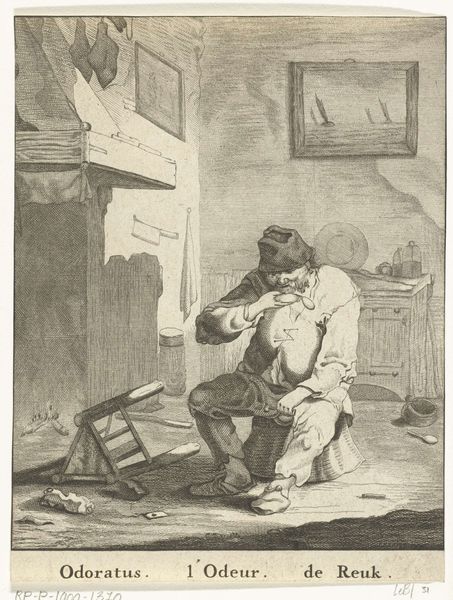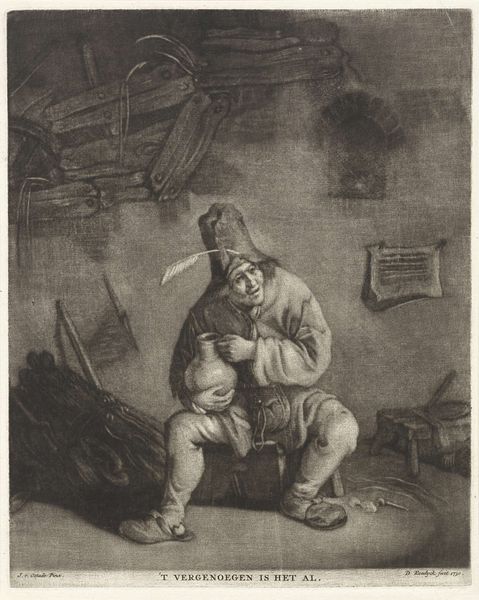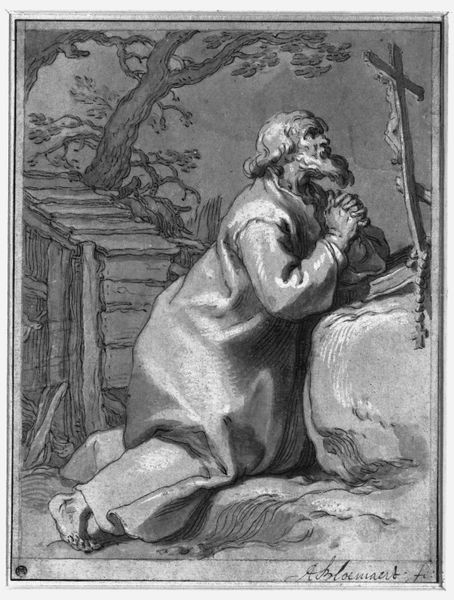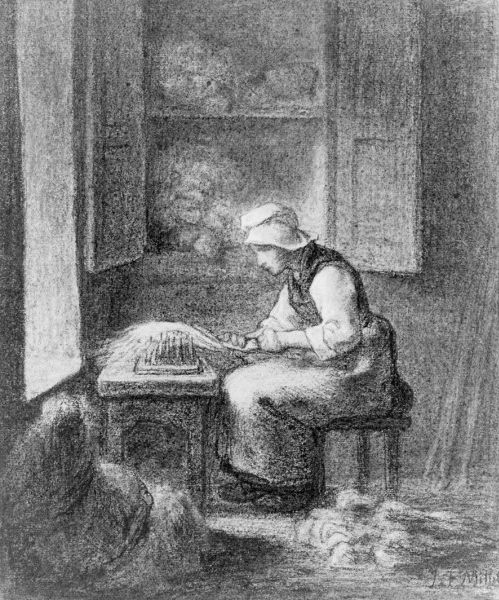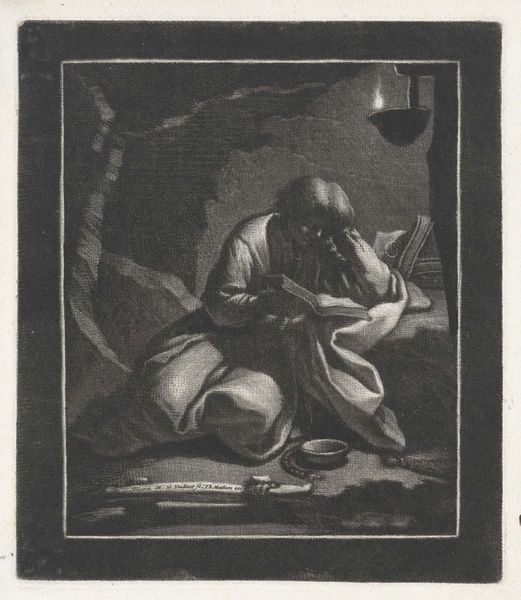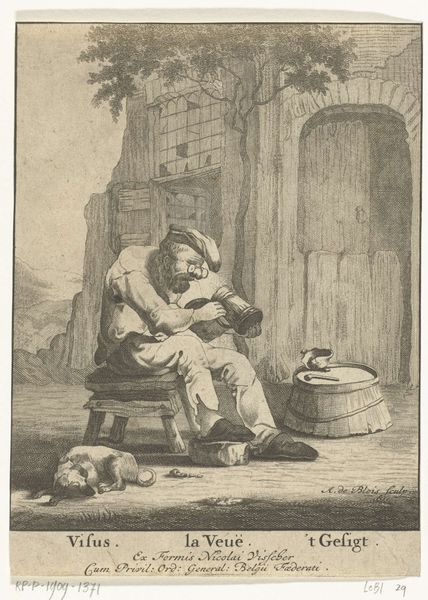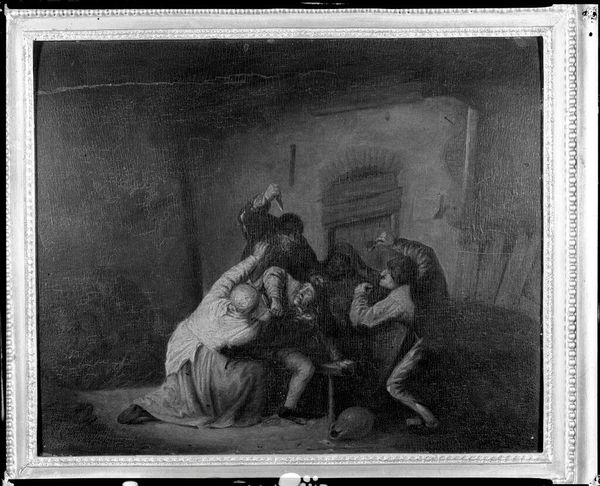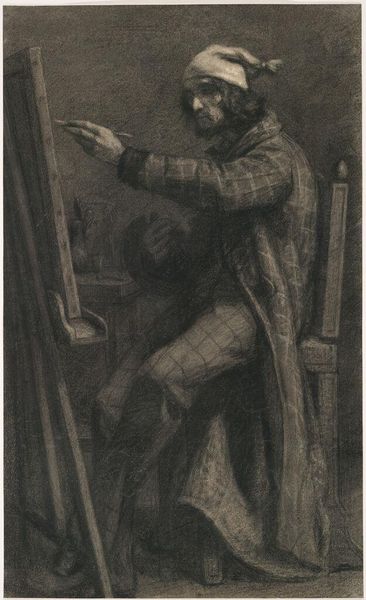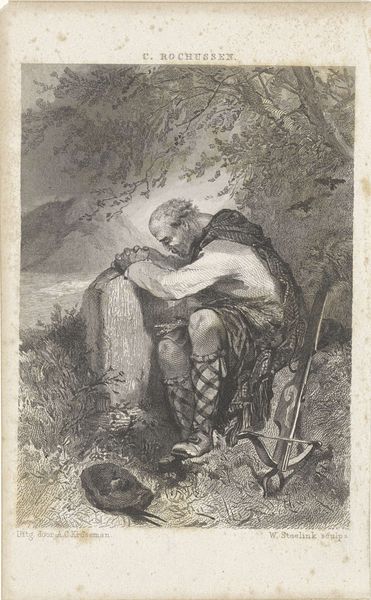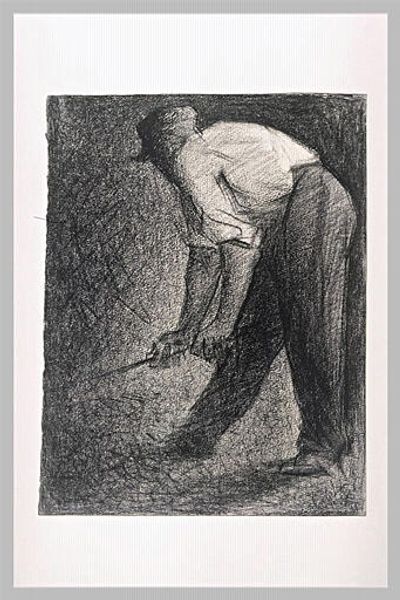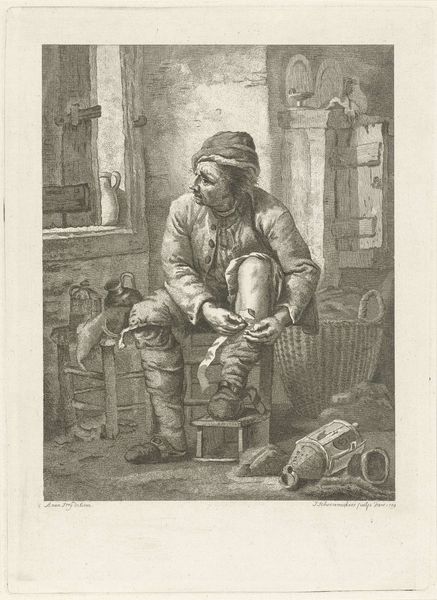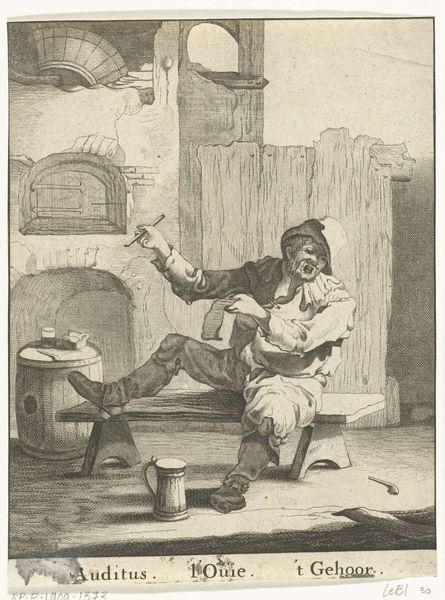
painting, oil-paint, wood
#
portrait
#
baroque
#
dutch-golden-age
#
painting
#
oil-paint
#
figuration
#
wood
#
genre-painting
#
monochrome
#
charcoal
#
realism
#
monochrome
Dimensions: 26 cm (height) x 23 cm (width) (Netto)
Curator: I’m struck by the melancholic tone immediately. The greyish monochrome palette, combined with the slightly hunched posture of the smoker, gives off a distinct feeling of weariness. Editor: This small oil on wood panel, entitled “A Smoker,” was painted by Adriaen Brouwer sometime between 1621 and 1638. It's currently held at the Statens Museum for Kunst, if you’d like to visit. Curator: It's amazing how Brouwer manages to convey such a weight of feeling with such limited tonal range. It reminds me a little of certain chiaroscuro experiments. The smoking pipe itself, though… that’s more than just an object here, right? Editor: Certainly. Smoking in Dutch Golden Age painting carries connotations, often linked to ideas of fleeting pleasures, vanity, or the transience of life itself. It could be read as a ‘memento mori’ of sorts. Curator: Right, it is more than just an indulgence but something tied to mortality. The image of the burning tobacco as a symbol, then – burning away existence, quite literally going up in smoke. It's also interesting how genre painting was becoming its own form during this time. This wasn't just history painting. Editor: Precisely. This focus on everyday life reflects a shift in patronage and subject matter. The burgeoning middle class was interested in art that depicted familiar scenes, perhaps as a reflection of their own lives and experiences. Also, in Brouwer’s work, as with many others during the period, these “low-life” or genre scenes have, unsurprisingly, been linked to societal morals. The question then turns to who exactly he may have been depicting in paintings like this, and to what extent the reality of their lived existence is compromised in translation. Curator: The figure here looks, almost in silhouette. Like a symbol distilled into human form. Despite what has become known of such historical contexts in the social, what are you taking away from it as a feeling? Editor: To me, a moment suspended – perhaps in quiet contemplation, perhaps in quiet desperation. I appreciate seeing this piece in a social historical light that still somehow allows a focus on the emotion, beyond class assumptions. Curator: Absolutely, this artwork encourages contemplation, on multiple levels, even across eras. Editor: A surprisingly relevant portrait, I’d say. Food for thought, certainly.
Comments
No comments
Be the first to comment and join the conversation on the ultimate creative platform.
